The Colosseum is one of the world’s most famous landmarks and an iconic building and historical site in Rome. Here, violent scenes between man and man or animal and man took place, and here, many brave warriors faced their own deaths.
If you are in Rome or planning to travel there, you should undoubtedly visit the Colosseum. It is a magnificent experience that will undoubtedly take you back to a time that, in many ways, shaped Italy into what it is today.
Tickets to the Colosseum
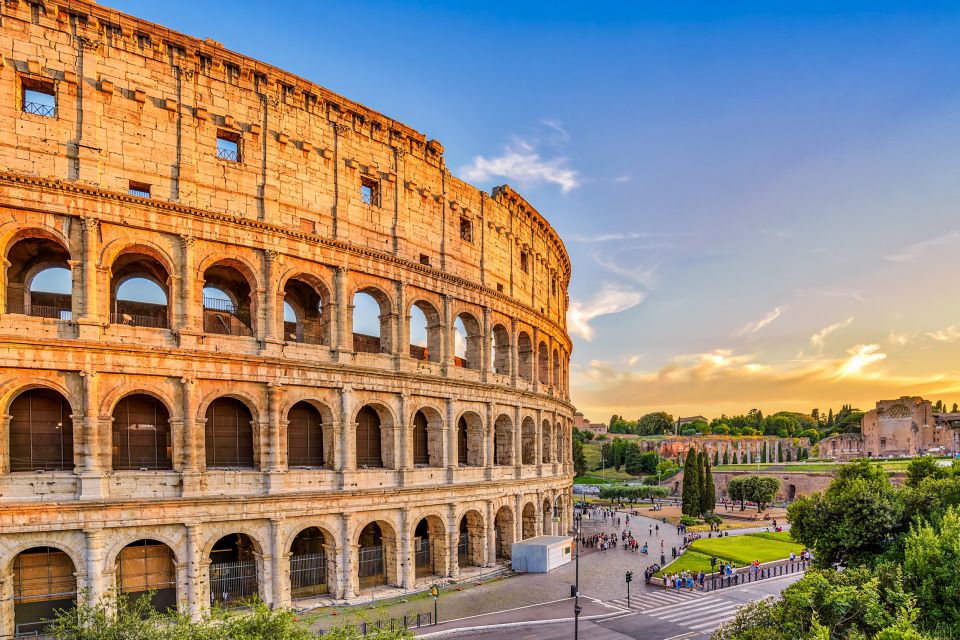
If you want to visit the Colosseum, you can book tickets online, which are valid for entry at a specific time. You can also go directly to the ticket counters on-site to purchase your tickets. A tip is to buy tickets at the Roman Forum instead of at the ticket office at the Colosseum, as the queues there are often shorter.
However, in general, you should expect long queues when visiting the Colosseum, even if you have purchased your ticket in advance. After all, it is one of the most visited landmarks in all of Italy.
A good alternative is to purchase tickets with Get Your Guide. You will then skip the queues and can head to the Fast Track entrance, where you are welcome to enter during the time period stated on your ticket. The ticket also includes entry to the Roman Forum (on the same day) and the Palatine Hill.
For a delightful, interactive experience, those who purchase tickets this way also receive a downloadable map of Rome during its heyday. This way, with a little imagination, you can follow what life was like during the Colosseum’s golden age. Buy your tickets here
How to Get to the Colosseum
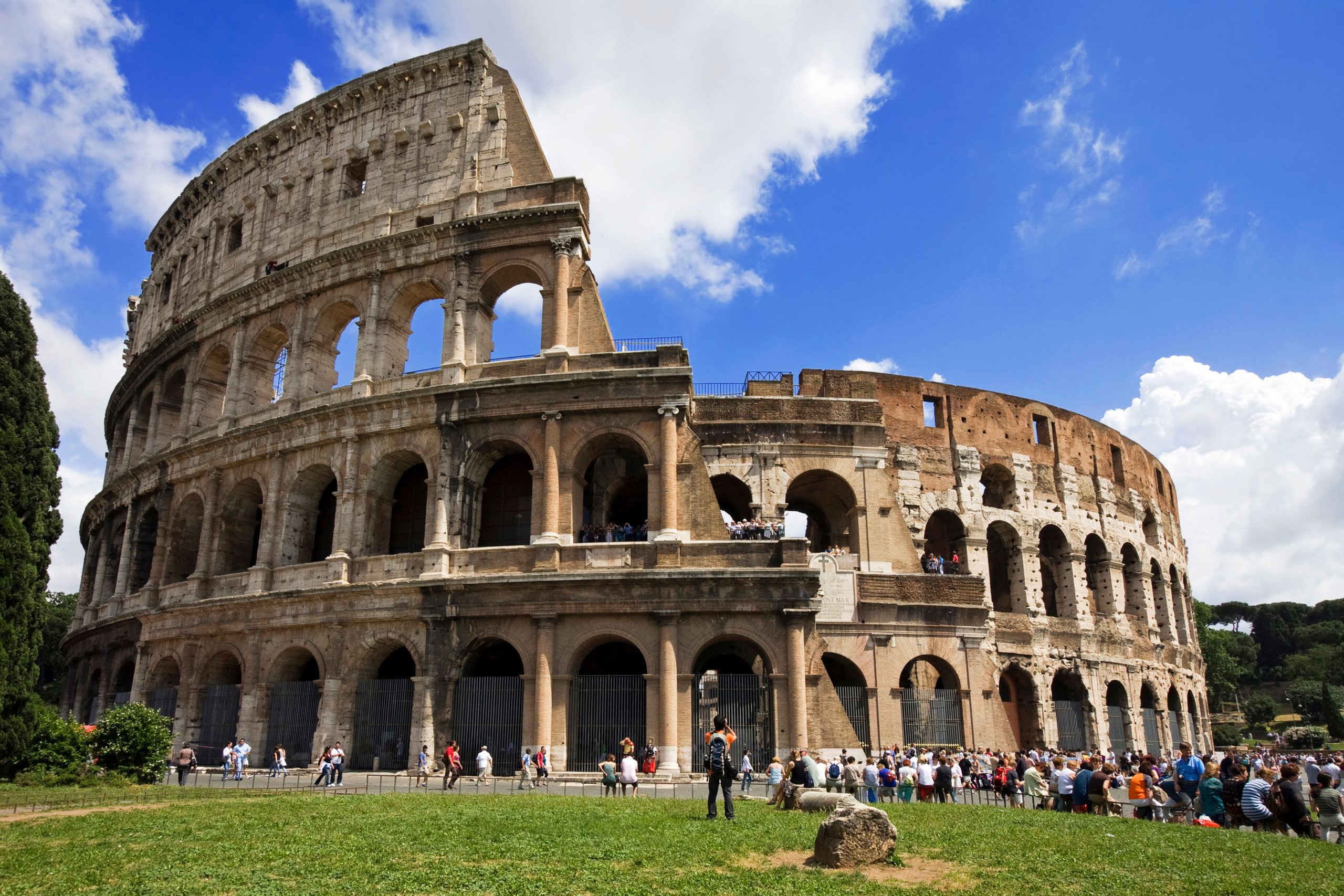
If you’re lucky, you’ve already booked accommodation with a view of the Colosseum, in which case you can easily walk over to the landmark. For those who don’t stay nearby, there are several other convenient options.
If you are staying in Rome, there are several easy ways to get to the Colosseum. If you take the bus, numbers 175 or 271 apply if you’re coming from the south. Otherwise, you can choose between 3, 8, 40, 60, 23, 30, 85, 87, 117, 810, or 870. There are, in other words, many good options, and all are just a few minutes’ walk from the Colosseum.
If you take the metro instead, the Colosseo station is the one to go to. It will then take you just a few minutes to walk to the entrance of the Colosseum. A single adult ticket for the bus or metro costs 1.50 euros.
The History of the Colosseum
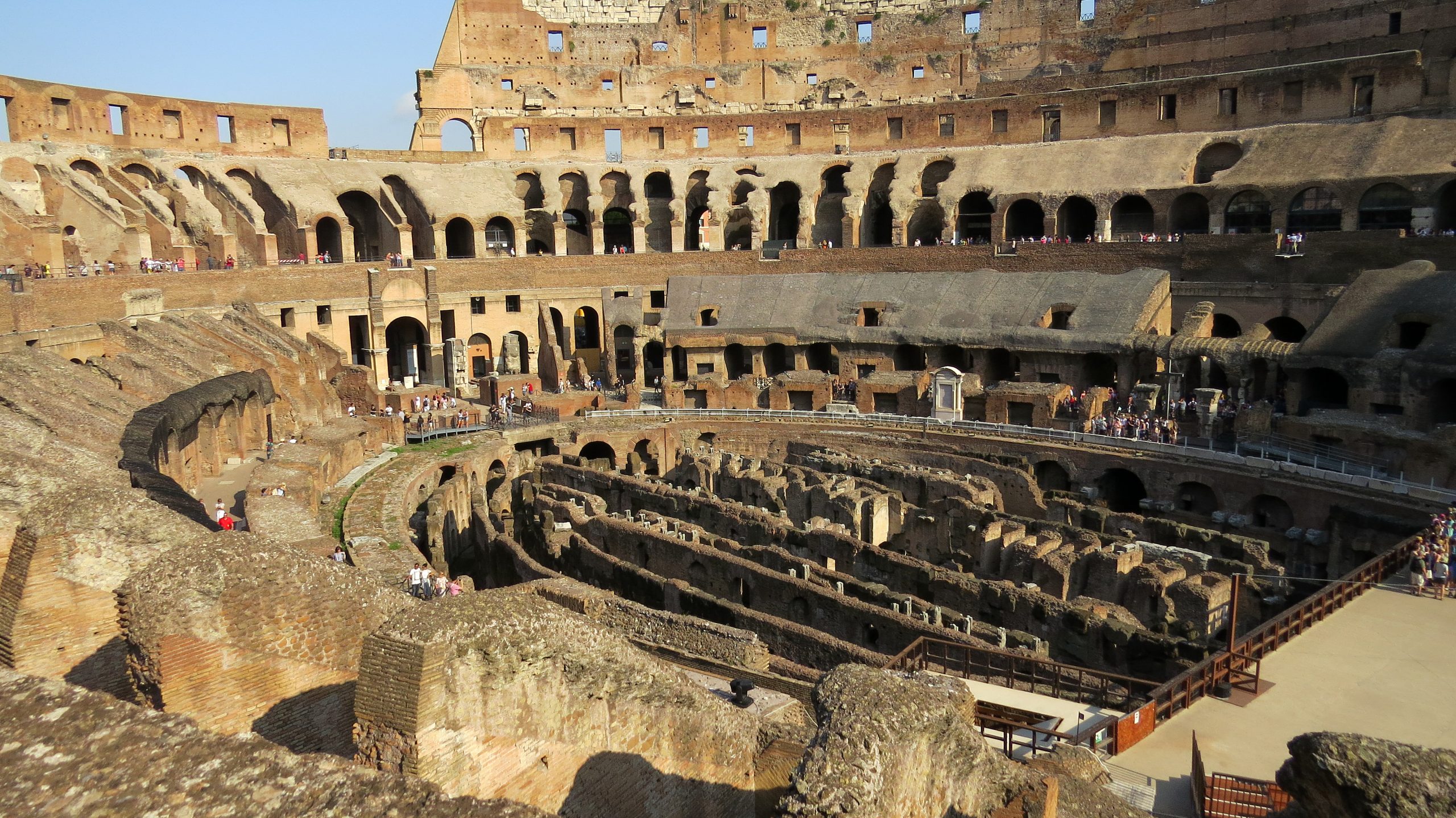
The Colosseum is an amphitheater in Rome, built by Emperor Vespasian and completed by his son Titus between 70 and 80 AD. It is a sometimes violent history that unfolds here, and during the inaugural festivities, which lasted 100 days, as many as 11,000 wild animals were killed.
Among the first things you notice when visiting the Colosseum is how large and impressive this landmark is. The circumference is 524 meters, and it is 48 meters high. During the time of the Roman Empire, battles were held at the Colosseum, where wild animals often competed against men who had been forced there as prisoners.
Gladiatorial games and public executions were also held here, as well as theatrical performances. These types of events could attract as many as 87,000 spectators at their peak.
Fires ravaged the Colosseum on several occasions between its construction and the 6th century. This has meant that the Colosseum has been rebuilt and renovated several times.
During the Middle Ages, the Colosseum underwent significant changes. The gladiatorial games had ended, and the arena was turned into a cemetery, while the vaults under the stands became residences. Around 1200, the Frangipane family took over, and it is believed that they used the Colosseum as a castle. During the great earthquake of 1349, the southern side of the Colosseum collapsed. The ruined parts were then used to build palaces, churches, and other buildings around Rome.
The Colosseum got its name from a colossus, in this case, a huge statue of Emperor Nero, which originally stood next to the building. The official name of the Colosseum is the Flavian Amphitheater, as it was built during the time when the Flavian dynasty held imperial power in Rome.
In recent years, the Colosseum has undergone several important renovations to ensure that the building will remain standing for a long time to come.
What You Must Not Miss at the Colosseum
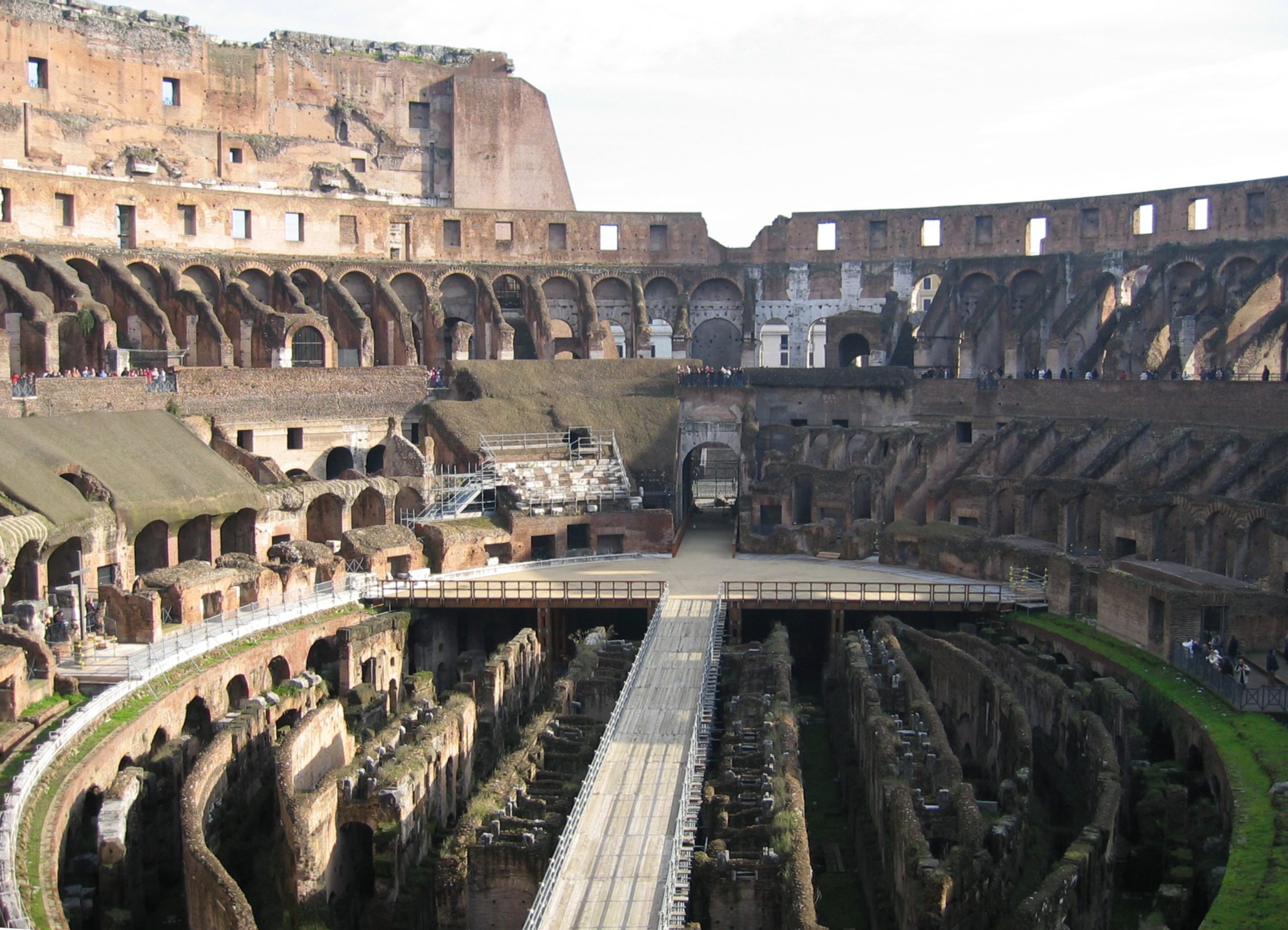
There are a number of highlights that you absolutely must not miss if you plan to visit the Colosseum in Rome. Depending on whether you have unlimited time or need to focus on the most important things to see here, you should ensure you experience this.
The Colosseum Arena
When you visit the Colosseum, you must, of course, also see the arena itself and the famous gladiator gate through which the men who fought here entered the arena. It is possible to take a guided tour or experience this part of the Colosseum on your own.
Memorial Plaque of the Colosseum
Just before you enter the Colosseum, you should take the opportunity to see the famous plaque with the Colosseum’s real name – the Flavian Amphitheater. This is located on the middle ring of the Colosseum, opposite the Temple of Venus, and also contains the names of the popes who played a crucial role in the Colosseum’s development.
See the Vendors’ Artifacts from the Roman Empire
If you take the elevator to the second floor inside the Colosseum, you will find something exciting for the whole family. This is a collection of cool artifacts such as copper and spoons used by those who sold food and other goods during the Colosseum’s heyday. Here, you get a fantastic insight into how progressive the people of Rome were at that time.
Also read: The Vatican in Rome
Guided Tours and Other Experiences at the Colosseum

There are a number of guided tours you can book around the Colosseum, so regardless of your interests, you can advantageously find one that suits you.
For example, you can book a guided tour of the underground tunnels, which were the place where slaves and animals were held before being forced out to fight in the arena. Here, you are guaranteed to learn a lot about the Colosseum’s history. These tours can be booked on-site or online.
Opening Hours of the Colosseum
The opening hours of the Colosseum are adapted to the time of year. In general, you are recommended to visit this landmark early in the morning if you want to avoid the longest queues and do not have a Fast Track ticket with Get Your Guide.
Opening hours:
From February 16 to March 15: 8:30 AM–5:00 PM
From March 16 to the last Saturday in March: 8:30 AM–5:30 PM
From the last Sunday in March to August 31: 8:30 AM–7:15 PM
From September 1 to September 30: 8:30 AM–7:00 PM
From October 1 to the last Saturday in October: 8:30 AM–6:30 PM
From the last Sunday in October to February 15: 8:30 AM–4:30 PM
Good to Know Before Your Visit
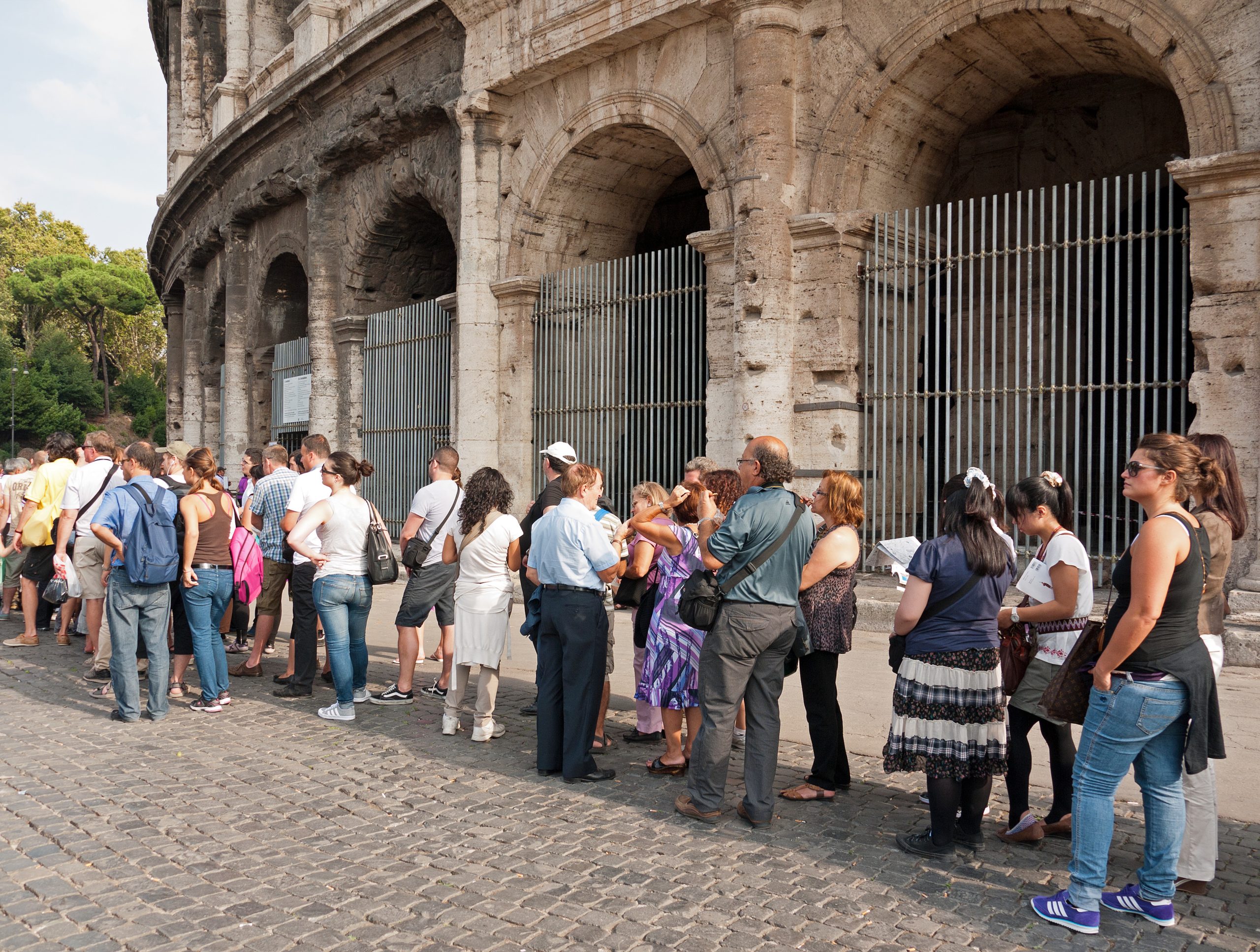
Every year on March 8, it is free for women to visit the Colosseum. This is to celebrate International Women’s Day.
The last entry is 1 hour before the Colosseum closes for the evening. This is to ensure visitors have enough time to see the most important parts of the Colosseum and its surroundings.
Not all parts are accessible for wheelchair users, but many areas of the Colosseum can be reached by wheelchair. You are warmly recommended to contact them in advance if you want more details about accessibility.
Children under 16 are not allowed to visit the Colosseum on their own and must be accompanied by an adult.
Feel the Wings of History at the Colosseum
The Colosseum is an excellent destination for all ages and types of travel companions. Therefore, you are warmly recommended to visit when you are in Rome. Here, you can easily spend a couple of hours discovering the Colosseum as well as the adjacent Roman Forum and Palatine Hill.
So book your tickets and feel the wings of history at one of the world’s most visited landmarks. It is guaranteed to be a visit you will remember for a lifetime.
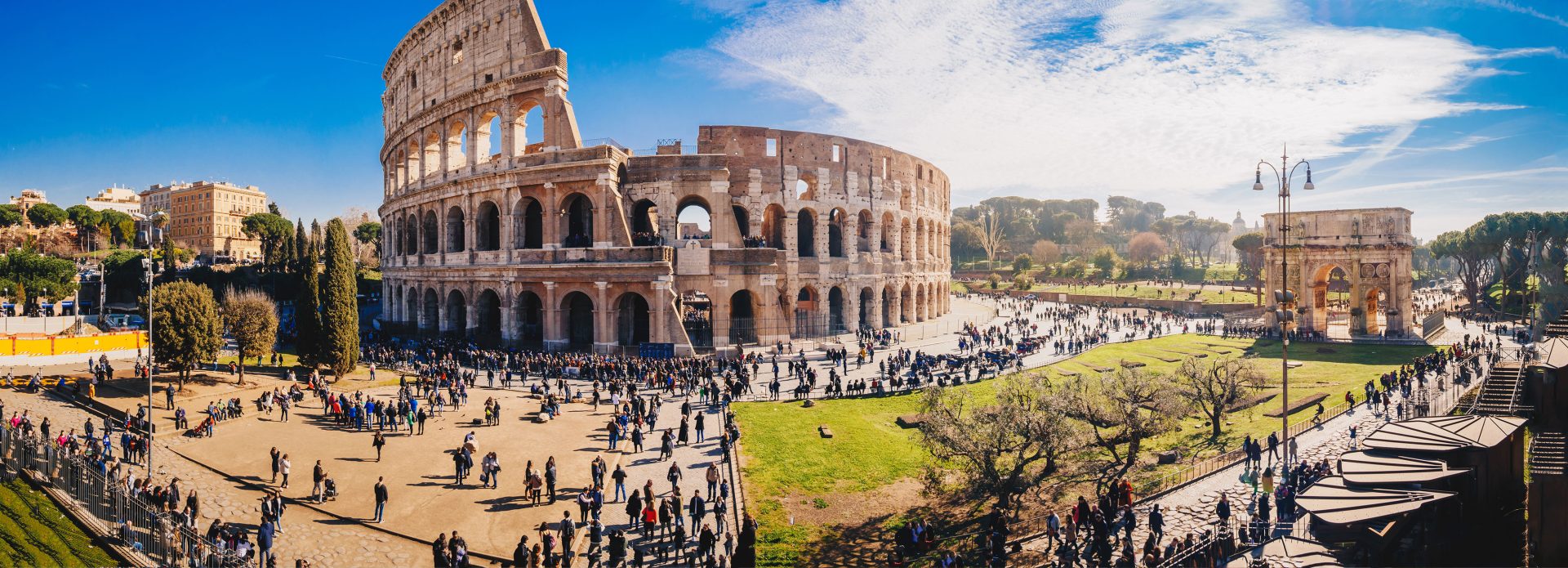
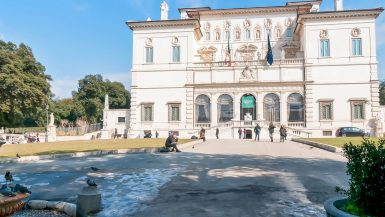
Leave a reply